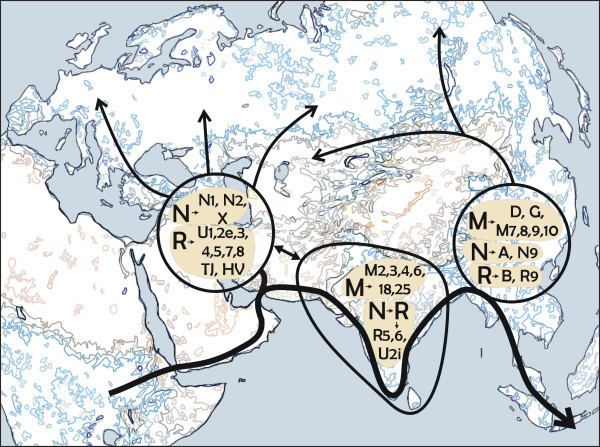Possible time of origin 40,000 - 60,000 YBP Ancestor M Defining mutations 4883 5178A 16362 | Descendants D4, 16189 | |
 | ||
In human mitochondrial genetics, Haplogroup D is a human mitochondrial DNA (mtDNA) haplogroup.
Contents
Origin
Haplogroup D is believed to have arisen in Asia some 48,000 years before present. It is a descendant haplogroup of haplogroup M.
Distribution
It is found in Northeast Asia (including Siberia). Its subclade D1 (along with D2, D3, and D4h3a) is one of five haplogroups found in the indigenous peoples of the Americas, the others being A, B, C, and X.
Haplogroup D is also found quite frequently in Central Asia, where it makes up the second most common mtDNA clade (after H). Haplogroup D also appears at a low frequency in eastern Europe and southwestern Asia.
Subclades
There are two principal branches, D4 and D5'6. D1 is a basal branch of D4 that is widespread and diverse in the Americas. D2, which occurs with high frequency in some arctic and subarctic populations (especially Aleuts), is a subclade of D4e1 parallel to D4e1a and D4e1c, so it properly should be termed D4e1b. D3, which has been found mainly in some Siberian populations and in Inuit of Canada and Greenland, is a branch of D4b1c.
Tree
This phylogenetic tree of haplogroup D subclades is based on the paper by Mannis van Oven and Manfred Kayser Updated comprehensive phylogenetic tree of global human mitochondrial DNA variation and subsequent published research.
